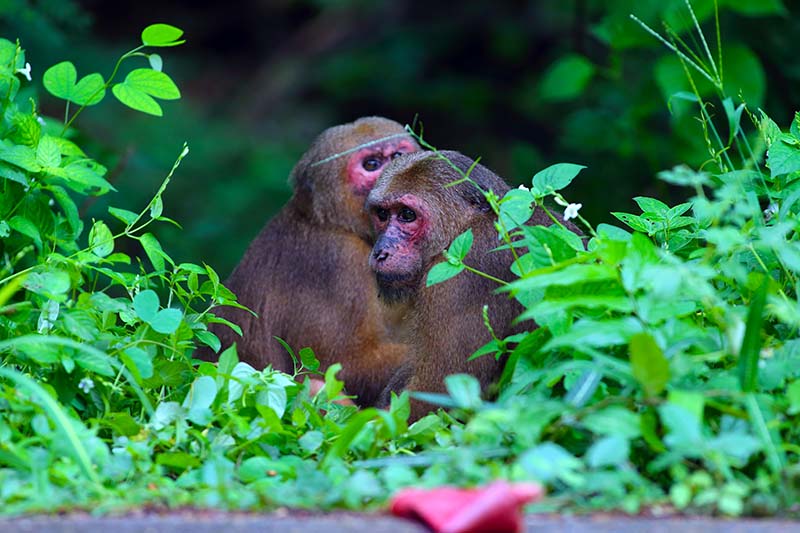
If you find yourself sloshing around a lagoon on the coast of southern Africa and happen upon a long-necked, spindly-legged, petite pouf of avian pinkness and think “Hmm, that one’s not quite the full flamingo,” you would be correct. Standing up to three feet tall but weighing only three to six pounds, Phoeniconaias minor, a.k.a. the lesser flamingo, is the smallest and one of the most brightly colored of six species of flamingo. What lesser flamingos lack in size, they make up in numbers, forming million-strong mega-flocks in their African home. These very vocal gatherings also known as stands, colonies, or the aptly named flamboyance, help to ward off a long list of potential predators including lions, leopards, cheetahs, jackals, and hyenas. When you are on everyone’s menu, there is safety in numbers.
Like other wading birds, the lesser flamingo is dependent upon the healthy functioning of biodiverse coastal ecosystems for food. Lesser flamingos are filter feeders, skimming blue-green algae, insects and the occasional crustacean from the water through sieve-like structures called lamellae which line their boomerang-shaped bills. All flamingos stand on both legs when feeding, but tuck one leg under their plumage for up to four hours when sleeping. This famed one-legged posture, which long puzzled scientists, has now been attributed to the wading bird’s need for thermoregulation. Standing around in cold water for hours every day, even in a warm climate, can cause a rapid drop in body temperature. Researchers estimate that keeping one leg high and dry helps flamingos reduce heat loss by up to one-half.
This avian adaptation works in conjunction with the rete mirabile, a rather beautiful-sounding Latin term meaning “wonderful net” which refers to the intricate, fine web of arteries and veins that also serves to minimize heat loss in warm-blooded vertebrates. In flamingos, this arterial net functions to preserve upper body heat when their feet and legs are immersed in cold water during prolonged feeding and sleeping sessions.
These champion waders are also able, if awkward, fliers. Gangly necks and legs outstretched, lesser flamingos are capable of reaching speeds of up to 35 miles per hour. Although non-migratory, the birds do relocate in response to changes in climate that affect water levels and food supplies.
With coloration ranging from pastel to coral to bubble-gum pink, the eminently preen-worthy feathers of the flamingo species are a function of “you are what you eat.” Flamingo chicks are born grey or white, slowly acquiring their happy hue over several years as a result of consuming beta carotenoids. Carotenoids, which are found in foods like carrots, squash, apricots, and the blue-green algae favored by flamingos, are broken down by the liver into yellow, orange, and red fat-soluble pigments which are transmitted to plumage—no carotenoids in the diet, no pink in the flamingos.
While lesser flamingo populations are estimated to be between 1.5 and 2.5 million, the species is listed as near threatened by the IUCN as numbers are decreasing due to predation, habitat loss and illegal poaching. Here’s to hoping the smallest pink feathered ones hang on in there—lesser but not less than.




































































